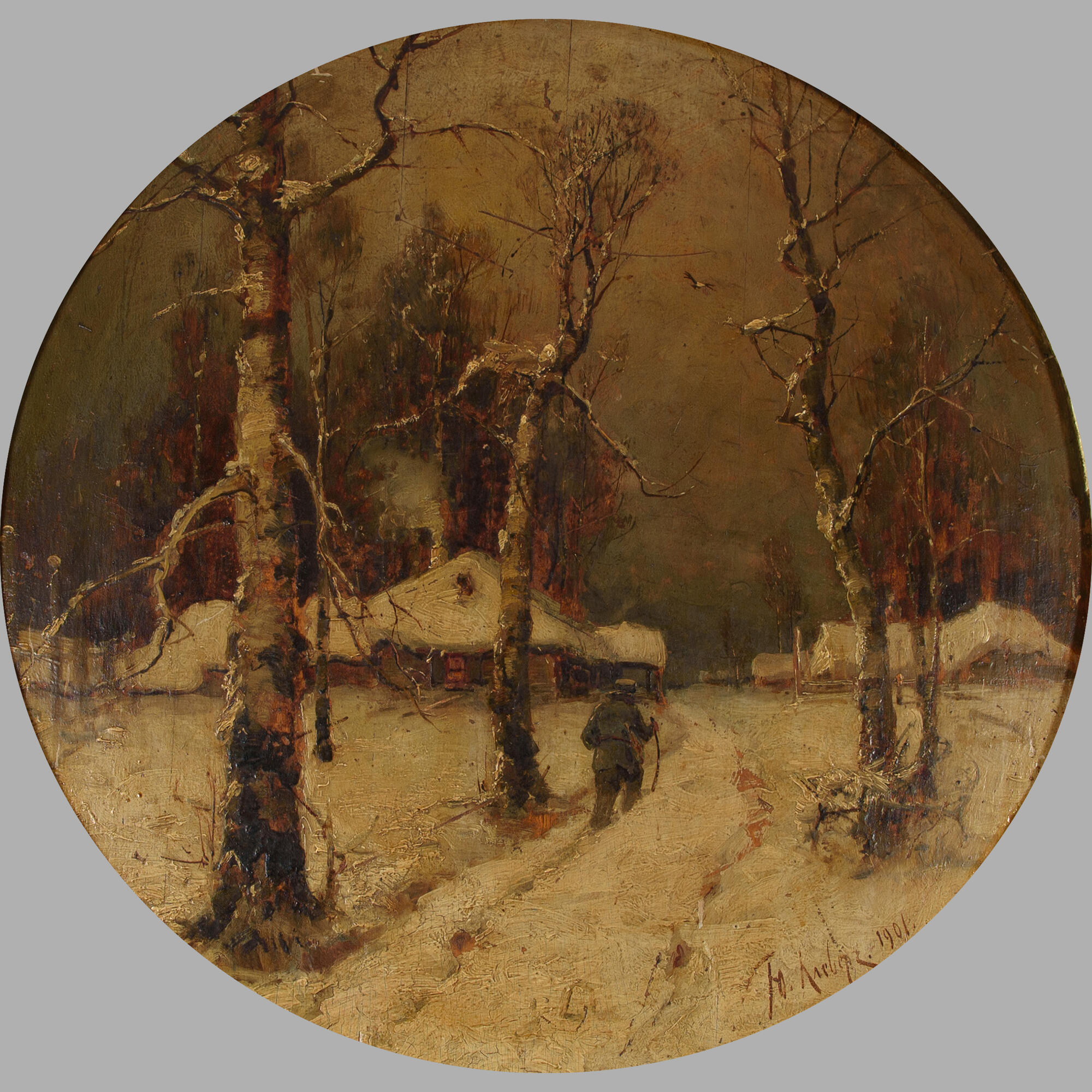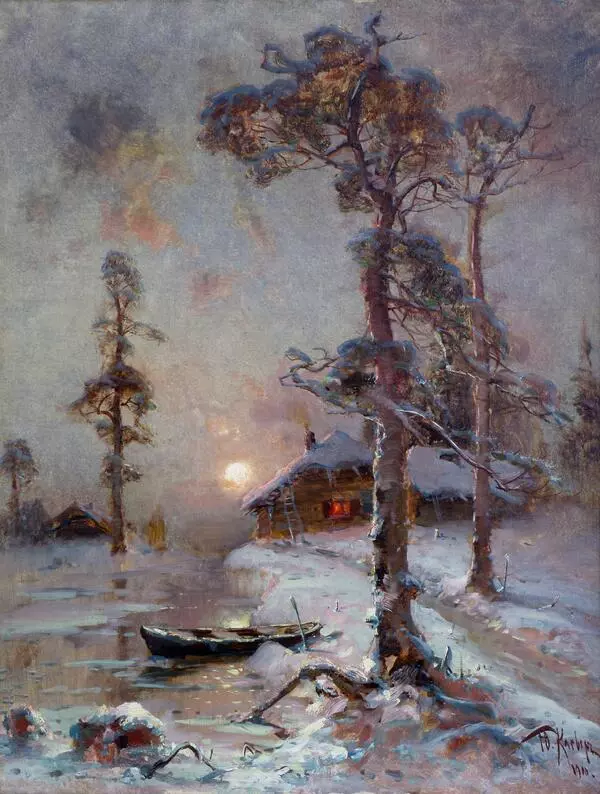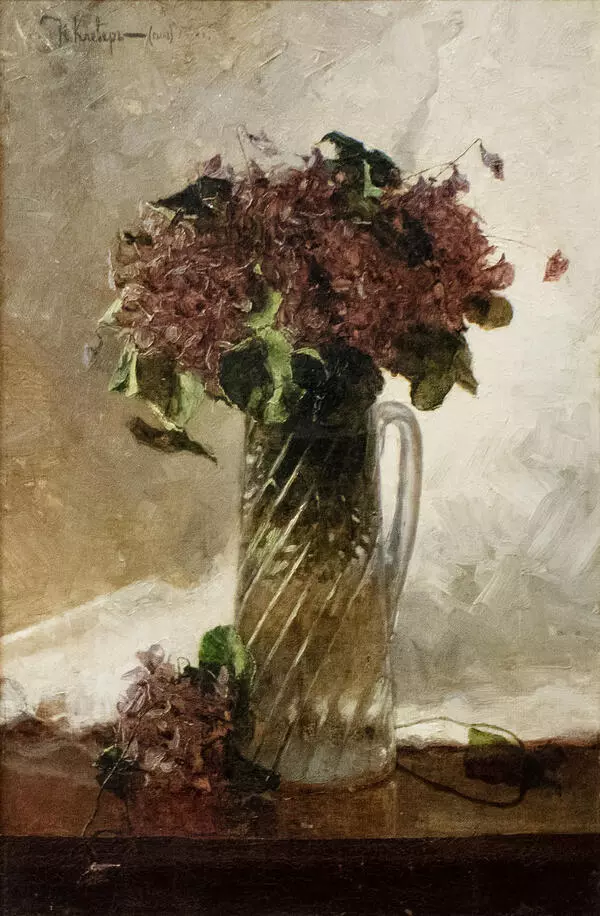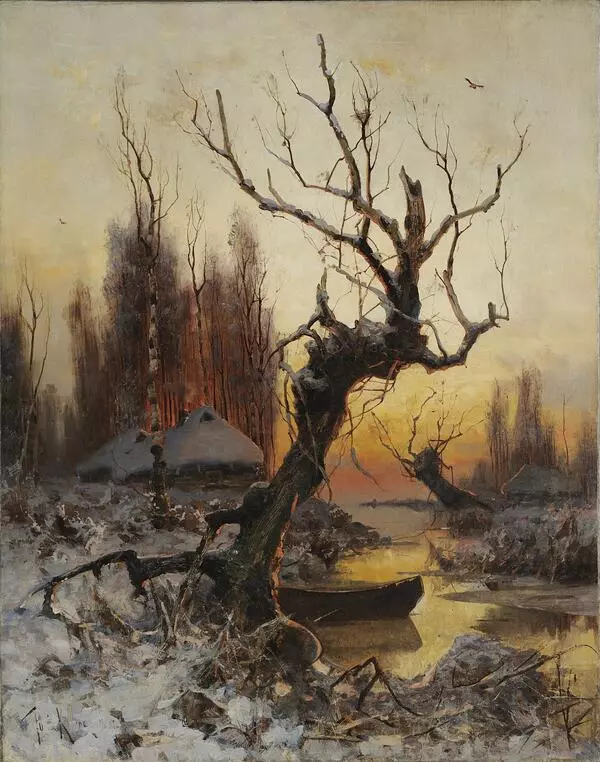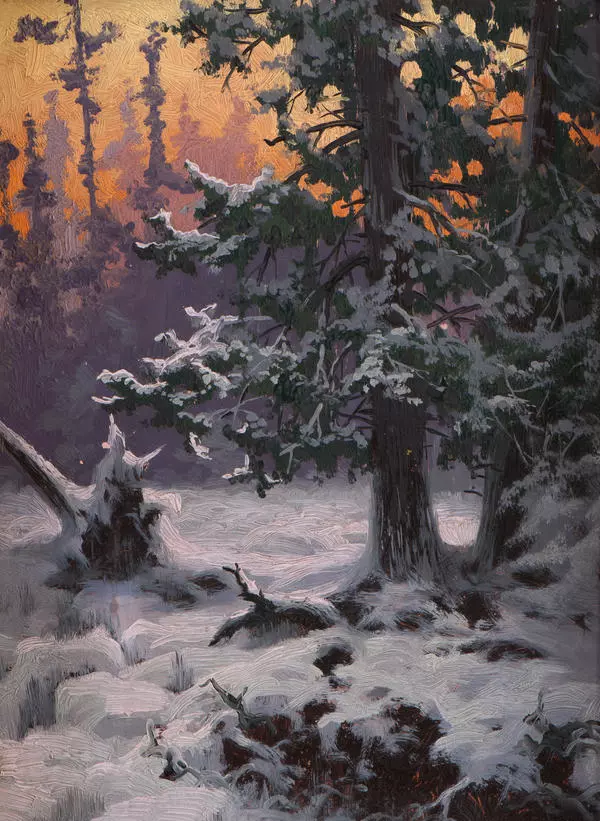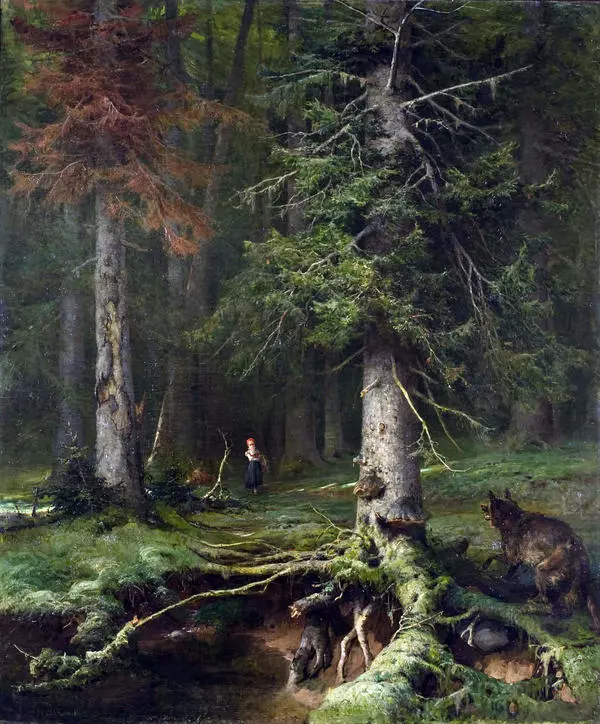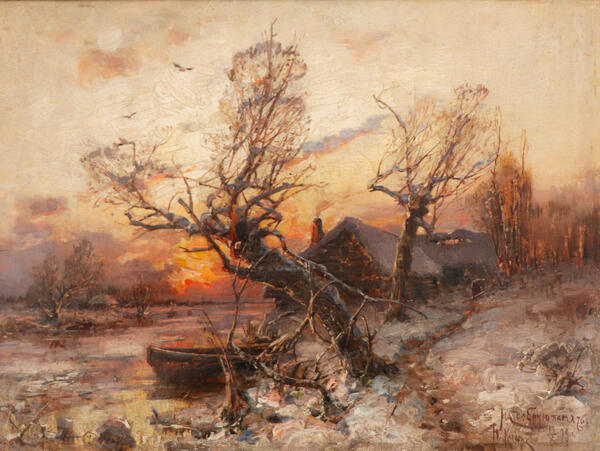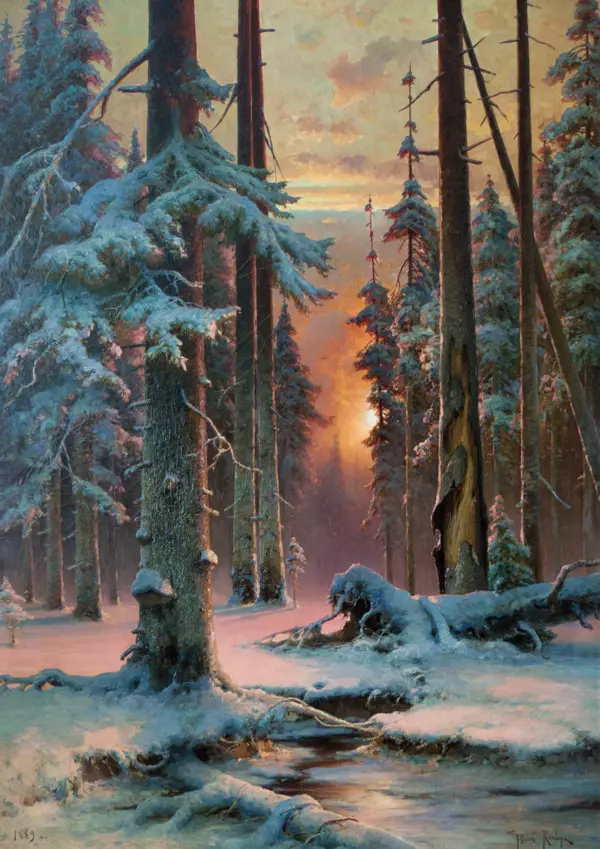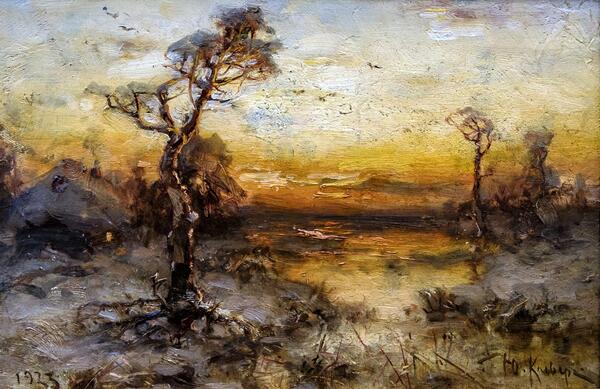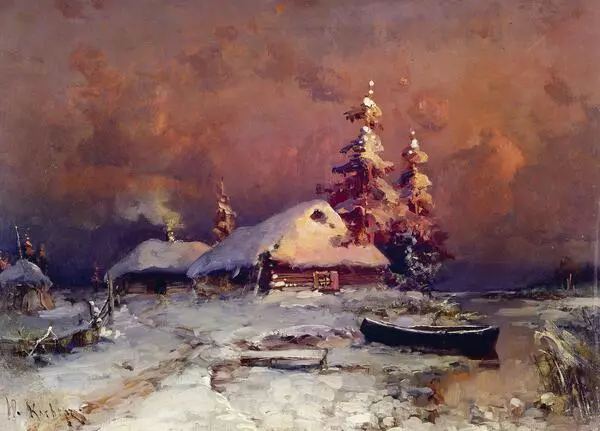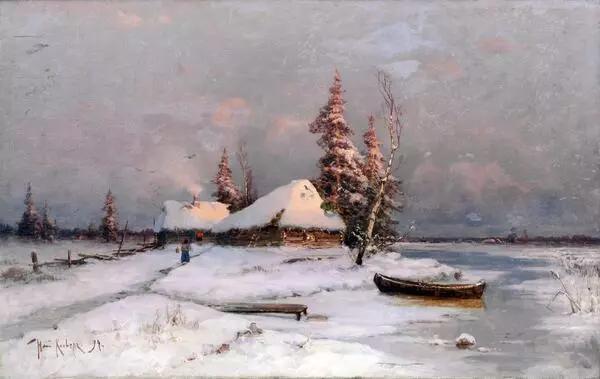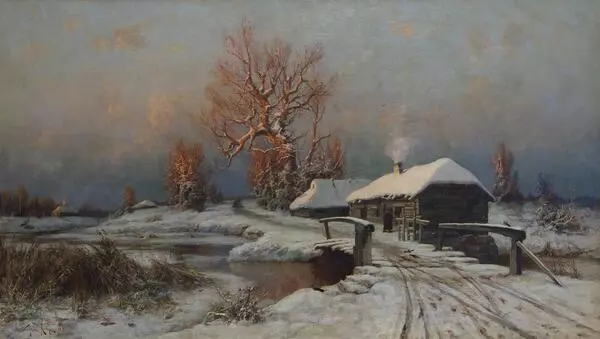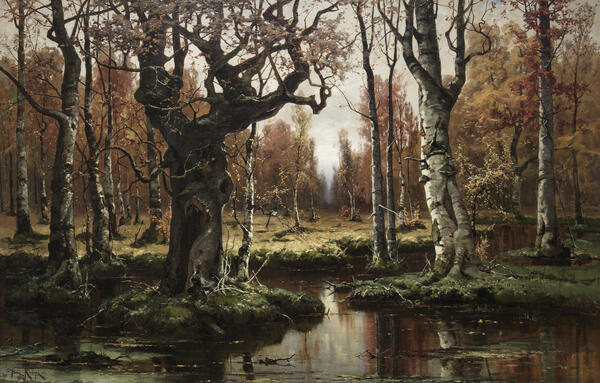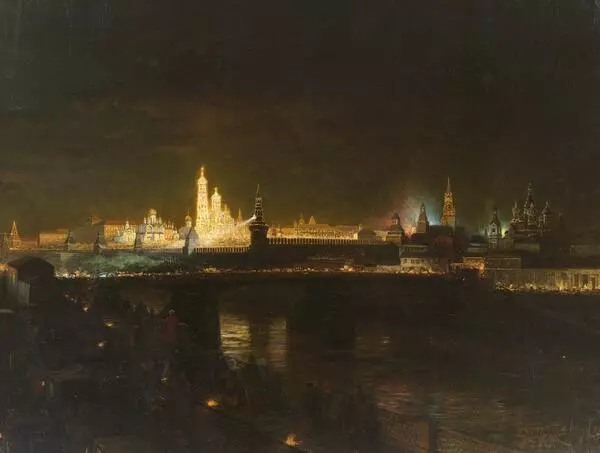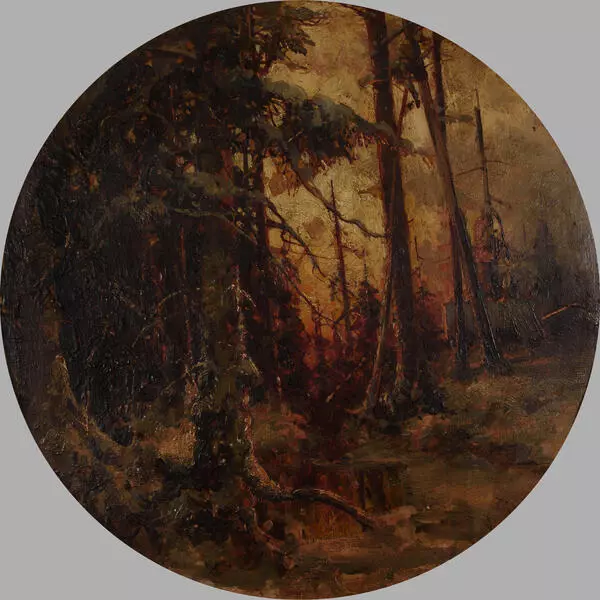The Russian artist of German descent, Julius Yulievich KlEver, won well-deserved recognition as a salon and academic landscape painter. In 1878 he was awarded the high title of Academician, and in 1881 — Professor of the Imperial Academy of Arts.
Julius Klever came from a German Baltic family. His father had a master’s degree in chemistry and was a teacher at the Veterinary Institute in Dorpat. As a child, the young artist showed a clear aptitude for drawing. In 1867 he successfully graduated from Dorpat Gymnasium and continued his studies in the architectural classes of the Imperial Academy of Arts. During that period, Klever tried his hand at various fields of art and discovered a clear penchant for painting, resulting in his transfer to the Academy’s landscape class, where he studied under such artists as Socrat Maximovich Vorobiev and Mikhail Konstantinovich Klodt.
The artist’s works are displayed in many Russian museums, including the State Tretyakov Gallery. Many influential and wealthy connoisseurs of Russian fine art, patrons of the arts and even some members of the royal family considered it an honor to have the artist’s paintings in their private collections. The artist painted one picture almost every day, which shows a considerable demand for his works and a huge number of orders. Julius Yulievich needed assistants, who made the so-called underpainting. The artist would sometimes add just a few finishing touches and sign the work with his own name. Such a practice was voluntary on the part of its participants and suited the buyers, who were aware of the nature of the work done in this way.
Klever’s paintings are full of vivid color, which gives them a special painterly quality: there is a certain allegory, fairy-tale and esoteric motifs. Many researchers of Klever’s work emphasize his mastery in depicting the snow.
Nature and houses harmoniously complement the overall concept of the displayed winter landscape. All compositional elements are united by the snow covering the whole space of the painting including the roofs of the houses in the background. Special attention should be paid to the depiction of light on a cloudy day, as well as to the skillful introduction of the human image into the overall composition of the winter nature.
Julius Klever came from a German Baltic family. His father had a master’s degree in chemistry and was a teacher at the Veterinary Institute in Dorpat. As a child, the young artist showed a clear aptitude for drawing. In 1867 he successfully graduated from Dorpat Gymnasium and continued his studies in the architectural classes of the Imperial Academy of Arts. During that period, Klever tried his hand at various fields of art and discovered a clear penchant for painting, resulting in his transfer to the Academy’s landscape class, where he studied under such artists as Socrat Maximovich Vorobiev and Mikhail Konstantinovich Klodt.
The artist’s works are displayed in many Russian museums, including the State Tretyakov Gallery. Many influential and wealthy connoisseurs of Russian fine art, patrons of the arts and even some members of the royal family considered it an honor to have the artist’s paintings in their private collections. The artist painted one picture almost every day, which shows a considerable demand for his works and a huge number of orders. Julius Yulievich needed assistants, who made the so-called underpainting. The artist would sometimes add just a few finishing touches and sign the work with his own name. Such a practice was voluntary on the part of its participants and suited the buyers, who were aware of the nature of the work done in this way.
Klever’s paintings are full of vivid color, which gives them a special painterly quality: there is a certain allegory, fairy-tale and esoteric motifs. Many researchers of Klever’s work emphasize his mastery in depicting the snow.
Nature and houses harmoniously complement the overall concept of the displayed winter landscape. All compositional elements are united by the snow covering the whole space of the painting including the roofs of the houses in the background. Special attention should be paid to the depiction of light on a cloudy day, as well as to the skillful introduction of the human image into the overall composition of the winter nature.
